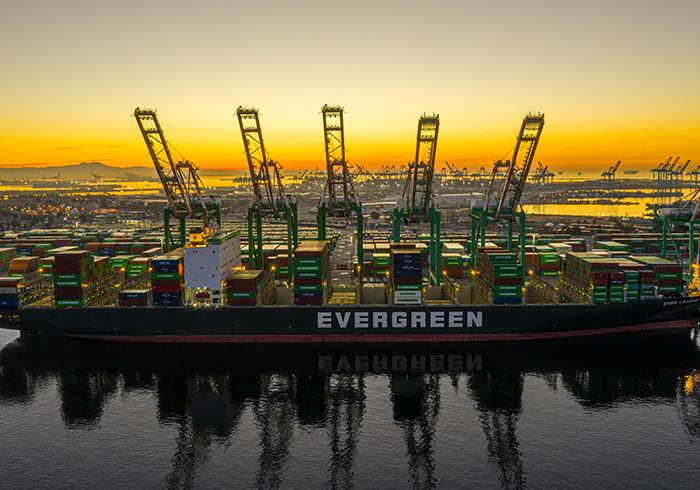The anticipation of steep tariff increases has propelled imports to the US during the first seven months of this year, but ongoing uncertainty and volatility mean wholesale changes to supply chains are not yet materialising.
US companies have been braced for heavy duties on goods imported from major trading partners, including Canada, China, the European Union and Mexico, since President Donald Trump’s inauguration in January.
The World Trade Organization (WTO) warned in April – shortly after Trump unveiled a baseline 10% on all imports as well as additional duties targeting specific markets and sectors – that global goods trade was expected to shrink by 0.2% this year, driven largely by a near 10% slump in US imports.
In practice, the introduction of tariffs has been unpredictable, characterised by last-minute adjustments and delays. Rather than prompting an immediate drop in imports, the WTO revealed last week it had revised its forecast upwards, predicting trade is now expected to grow by nearly 1%.
“The upgrade is mostly due to frontloading of imports in the United States,” the WTO says.
Trade intelligence provider Descartes says the volume of US container imports in July was more than 18% higher than the previous month, and 2.6% higher than in July last year.
Though seasonal demand tends to be strong in July, Descartes says the figures also reflect “accelerated shipments in response to shifting trade policies”, including “suspected aggressive frontloading” of imports ahead of anticipated tariffs.
Trump’s approach has prompted speculation that US companies could seek alternative sources of supply for imports, or look to grow domestic production. However, making long-term plans is proving difficult while the tariff landscape remains highly uncertain.
Trump announced this week that a 30% tariff on imports from China would be delayed for an additional 90 days, meaning duties now stand at 20% with additional rates for specific sectors such as aluminium and steel.
That followed a White House announcement in late July that imports from Brazil would be subject to overall levies of 50%, and an agreement with the EU to establish an all-inclusive 15% ceiling.
Within North America, imports of goods that are compliant with the United States-Mexico-Canada Agreement (USMCA) remain tariff-free. Mexico was last week able to secure a 90-day pause on additional levies, but non-USMCA-compliant goods from Canada now face a 35% tariff.
“This degree of volatility is going to be with us for the foreseeable future,” says Jackson Wood, director of industry strategy within Descartes’ Global Trade Intelligence unit.
“Organisations that continue to succeed in this environment are the ones that learn quickly, and apply that learning quickly.”
Importers react
Industry experts believe there are nuances within the US import figures over the first seven months of this year.
“We saw an extraordinary burst of frontloading in the first quarter as importers raced to get ahead of tariffs,” says Bos Smith, portfolio manager for US fund BroadRiver Asset Management’s trade finance strategy, which focuses on buying receivables of Asian suppliers to the US.
“We’ve seen some pickup in Q3, but it’s still well below early-year levels. Average tariffs are already far higher than at the start of the year, making early, large-volume purchases much more costly. That’s dampened the incentive to frontload.”
At the same time, Smith says many importers “are a bit shell-shocked” after months of shifting deadlines and sudden policy changes.
“Even amidst the recent Q3 uptick, our clients remain reluctant to make major purchasing commitments before the trade picture stabilises.”
Descartes’ figures for July might appear to suggest buyers are seeking suppliers in alternative Southeast Asian markets, in an effort to diversify supply chains or move away from China.
Compared to June, US containerised imports from Hong Kong grew by nearly 48%, it finds. Imports from South Korea grew by 16.8%, from India by 13.6% and from Thailand by 13.1%.
For Descartes’ Wood, this is unlikely to indicate short-term changes in buyer behaviour. There is “certainly momentum to organisations that have diversified”, he says, but upending a company’s supplier base “can be a multi-year, if not a multi-decadal, undertaking”.
He adds it is also possible those figures could be amplified by companies transshipping Chinese goods via third countries to avoid higher duties.
Some US importers are making strategic changes, however. Wood says companies are showing growing interest in US-based foreign trade zones, which can be used to import and store goods without being subject to the country’s tariff regime.
Tariffs are paid once those goods are moved into the US economy, but can be subject to manufacturing or re-exported prior to those duties taking effect.
“Something like a foreign trade zone gives you the agility to lock down maybe a year’s worth of supply of products, but not having to write any big cheques to pay the duties that are owed on those,” he tells GTR.
“Typically, this has not been something every type of importer has explored, because until recently the tariff burden was not substantive enough. Now, if we’re looking at tariff burdens of millions of dollars, and tens or thousands of dollars a year in costs, operating in a foreign trade zone could make good financial sense.”
Food supply chains
Frontloading and storing imports is better suited to some goods than others, and many of the markets targeted by Trump’s tariff regime are major suppliers of agricultural and perishable goods to the US.
Brazil – now subject to levies of 50% – is the largest supplier of coffee beans to the country, closely followed by Colombia, US Department of Agriculture data shows.
The top three suppliers of oilseeds, such as soybeans, are Canada, Brazil and Mexico. Canada is also the largest supplier of beef, followed by Australia and Mexico.
Without the possibility of storing these goods long-term, food importers must assess whether shifting sources of supply now is worthwhile.
So far, the uncertainty over the long-term tariff environment means food importers “have been hesitant to make drastic changes due to the rapid pace of change”, says Amanda Oren, vice-president of industry strategy for grocery at Relex.
Relex’s artificial intelligence-driven platform helps companies optimise purchase volumes, based on costs, consumer demand and spending power, as well as numerous other data points that can affect margins.
Oren says there has been “movement starting in terms of where [companies] are importing from”, including by trying to shift to lower-tariff countries or relying more heavily on domestic production.
“But people are waiting for the dust to settle before they completely overhaul their supply chains,” she tells GTR.
In some commodities, there are already signs of change.
Australia has become a major supplier of beef to the US market over the past decade, and the country’s trade minister Don Farrell said on August 1 that an agreement to keep tariffs at 10% means Australian products “are now more competitive into the American market”.
But for other products, alternative strategies are less obvious. Major coffee-producing nations have been targeted by tariffs, and domestic production in Hawaii has declined from 36.5 million pounds in 2014 to 22.4 million last year, US government data shows.
“The question then becomes ‘are there other countries, such as countries in Western Africa, where we could be pulling in coffee from?’,” Oren says. “There may be a lower tariff, but it’s a balance; what does the consumer want? Is it the same quality level?”
Packaging is also affected, she adds, giving the example of aluminium tariffs leading to drinks manufacturers eyeing a shift from cans to bottles.
For now, Oren says, importers “are not really ready to put their foot on the gas in terms of investment”.
“People are putting concrete plans together, so that when they’re ready to press go, everything is in place,” she says. “But right now, there’s a lot of hesitation because of the rapid pace of change.”






